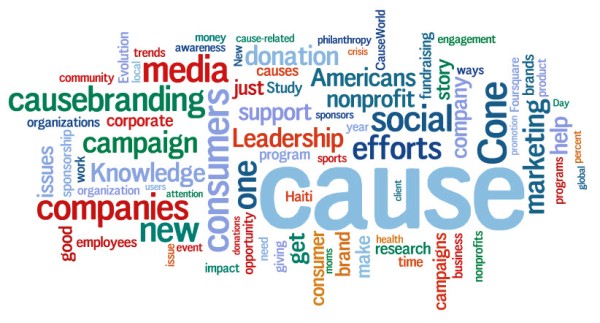Marketings purpose is to demonstrate value and provide differentiation. Judged by that criteria, cause marketing isnt any more useful a tool than coupons. In fact, it could actually be worse. That is, in some cases, cause marketing can actually do more harm than good–the opposite of corporate social responsibility–eliminating all justification for the practice.
While theres plenty of research that shows consumers will pick a brand with a good cause attached to it over one without, so many brands nowadays engage in some form or another of cause marketing that developing brand loyalty through any use of the latter seems laughable. This is particularly true during October, when virtually every company in the consumer-products industry touts its products as being pink (for breast cancer research and survivors) as well as during the holiday season.
So much so that consumers are actually starting to get turned off by these initiatives. After all companies such as KFC and Chambord have jumped into the game, and what do their products–fried chicken and liqueur–have to do with breast cancer awareness?
Experts have also pointed out inconvenient facts, such as that the death rate from breast cancer hasnt changed in a decade, despite the ubiquity of breast cancer awareness cause marketing. Given that stat, its pretty unlikely anyone unaware of breast cancer will become aware due to yet another pink product.
And theres also behavioral economics research indicating that people who buy a good product feel licensed to cut back on doing good in other ways. These effects can include anything from giving less to charity or mentally justifying doing things that one shouldnt. That would mean cause marketingisnt actually positive at all.
Perhaps its time to kill the old cause marketing model. But dont fret: Cause marketing isnt at a dead end yet.
There is a tremendous opportunity for businesses to take cause marketing to the next step, making it work for good while demonstrating value, providing differentiation and building brand loyalty. That next step centers around exploiting the unique resources companies have to do research and share information on good causes.
For the average consumer picking a charity is a tough proposition. Theres very little information available on which do the best work and help the most people. So individual givers are often limited to giving to the major charity brands or to organizations theyve encountered personally. Experts have recognized for decades that this contributes to a massive amount of waste in the charity sector. Businesses interested in cause marketing can change that.
Companies have the budget and time scale necessary to research charities and narrow it down to ones that are highly effective and measure results. Just as importantly, they have the communications infrastructure to publicize their research and findings to target customers. That means that a cause marketing message can move from a very generic statement–i.e., A portion of the proceeds will go to support hungry children.”– to one that’s very specific: Were channeling funds to [Charity X], which has proven it is dramatically reducing childhood hunger. You can see the difference you made at our site. In essence, a business willing to take this step can become the foundation for the average Joe. Hows that for a halo effect?
So what specific steps are necessary to move beyond todays increasingly ineffective–by all measures–and possibly harmful cause marketing programs? Here are four things every cause marketer can and should do, steps that will help your company stand out, capture customer attention and build brand loyalty, all while providing real value to customers and society:
1. Choose charities for your cause marketing campaign based on effectiveness. This means doing some research, but its worth the investment.
2. Tell customers what charity or charities youve chosen and why.Share information about how effective the charities are.
3. Give customers more information about how much money the charity is getting through the campaign and how the funds will be used. You can even help facilitate direct giving to the charity so customers can give even more to the effective organizations youve found. This will help customers see that your campaign is serious about making a difference.
4. Publish follow-up information after the marketing campaign is finished. That will help give customers confidence in your brand and set the stage for future campaigns to be even more effective.
Ultimately I think these steps should become the minimum standards for cause marketing campaigns in the future. Ive proposed a rating system for cause marketing campaigns which you can see here. But until that happens, there is an opportunity to build reputation, brand loyalty and attract target customers by following these steps.
If you dont believe me, think about a customer encountering these two cause marketing messages:
A portion of the proceeds will go to keeping girls in school in Africa,” or Five percent of net sales will go to Deworm the World, the worlds most effective program for keeping children in school in developing countries. See the impact of your purchase on our site.
Which one would you choose?
The article was taken from here

